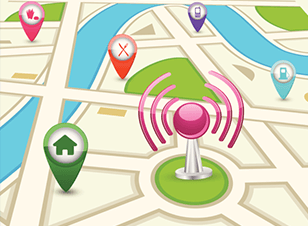 With GPS technology becoming more and more advanced and 4G connections available in most cities across Australia, location-based services are becoming a more valuable marketing tool for small business.
With GPS technology becoming more and more advanced and 4G connections available in most cities across Australia, location-based services are becoming a more valuable marketing tool for small business.
What are Location-Based Services?
When location services are enabled on a phone, you’re able to pinpoint the user’s location, not just down to which town or city they are in, but even which shop, restaurant or house they are at.
As a business owner you can use that location information to pinpoint specific users at specific times by setting up ‘geofences’. By cordoning off a designated campaign area, you can program your mobile app to send a targeted message to any app user that walks into your ‘geozone’.
Geofence Campaigns
There are a number of ways that you can use geofences to market your business, but one standout idea comes from Guatemalan shoe manufacturer, Meat Pack, who set up a Geofence around each of their competitor’s stores.
Each time someone with the Meat Pack app entered into a competitor’s store, they were automatically sent a timed Meat Pack discount code. The coupon started with a 99% discount and reduced the discount by 1% every second until the user entered their closest Meat Pack store. The user was eligible for whatever discount was on the screen the second they stepped into the store.
Within a week of the campaign launch, Meat Pack had poached over 600 shoppers from their nearby competitors, with one very fast customer managing to get an 89% discount on his shoes.
Limitations
Of course, there are some limitations to location-based services. For example, the strength of a user’s connectivity and the individual’s sharing settings will impact the usability of an app – but overall location-based campaigns offer an inventive way to add value to your brand experience.

